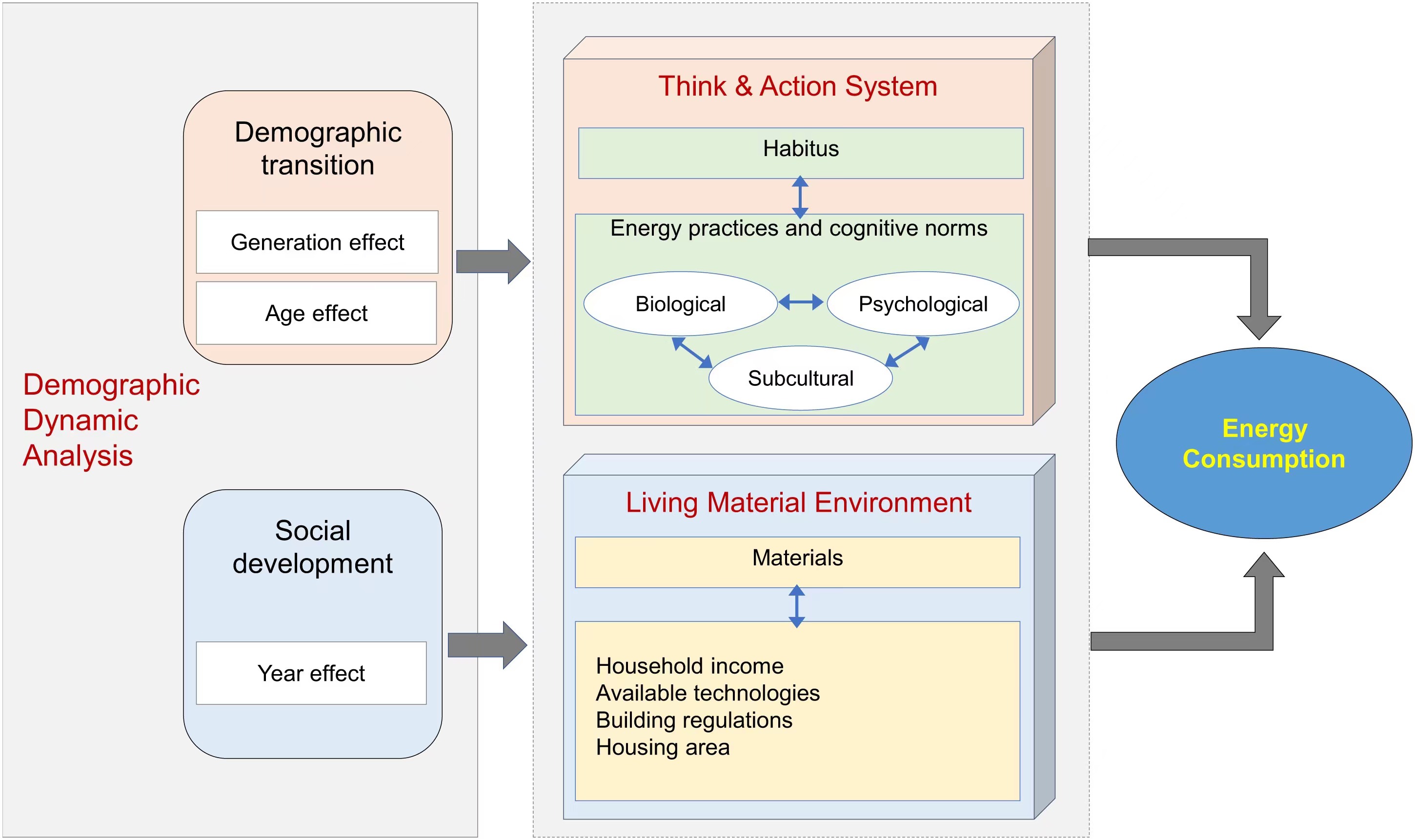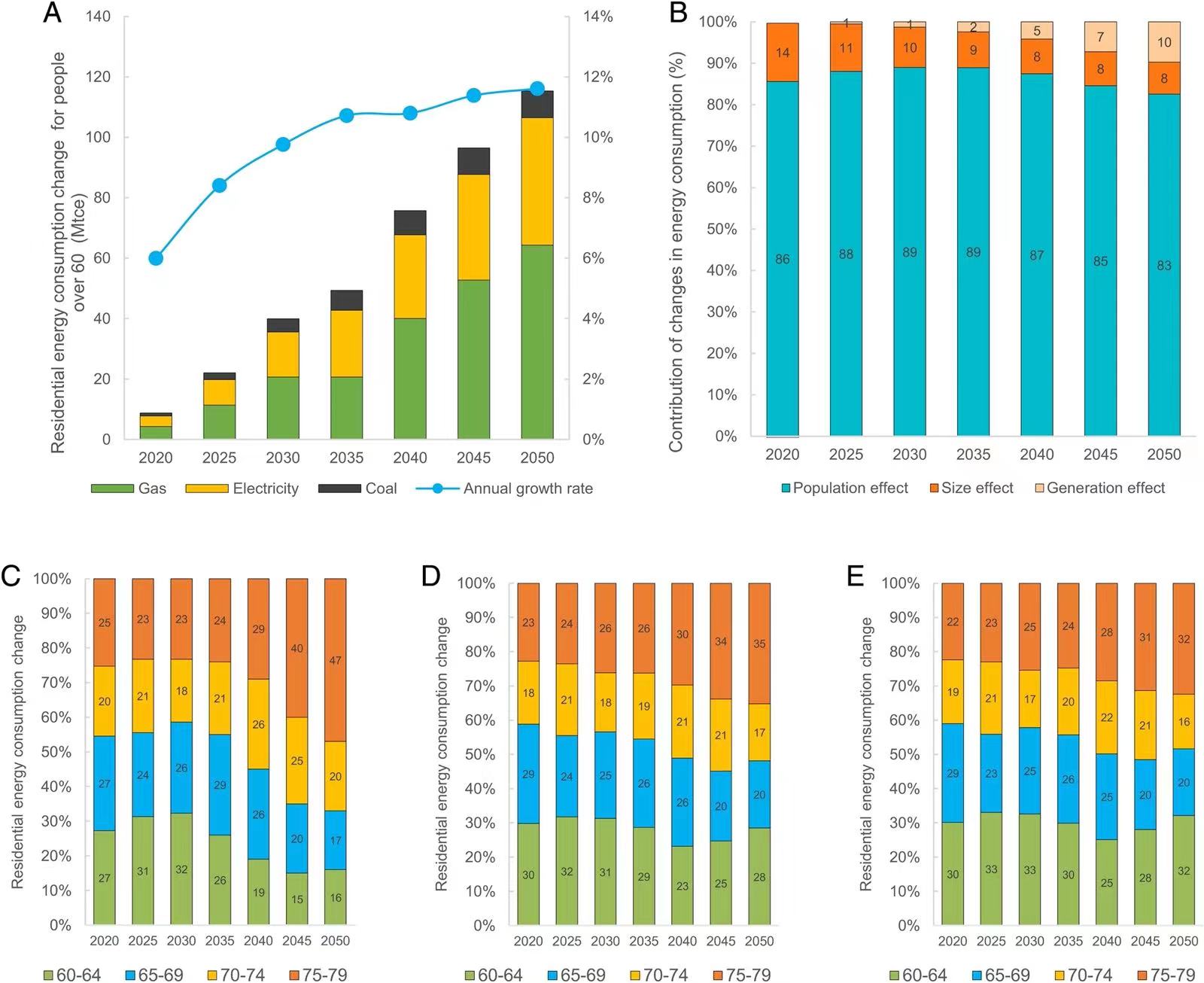Prof.
Wei Chu’s team from the School of Applied Economics of Renmin University of
China (RUC) and scholars from the International Institute for Applied Systems
Analysis (IIASA) on September 6th published their research result,
an article named Aging, generational shifts, and energy consumption in urban
China on the Proceedings of the National Academy of Sciences of the
United States of America, a leading international academic journal.
Han
Xiao, a PhD student in the School of Applied Economics, is the first author of
the paper, and Professor Wei Chu is the corresponding author. The paper is the
first research paper published in PNAS by a social science scholar from RUC as
the lead author.
Background
Aging
is a common challenge for countries around the globe. Due to the heterogeneity
of preferences across age groups, aging also profoundly affects the size and
structure of consumer demand. The average age of the population or the
proportion of the old population is often used in existing models to
characterize the population, which may ignore the differences in values,
preferences, behaviors and attitudes between generations due to different birth
and growth backgrounds, and in turn lead to biased demand forecasts.
China
has a large elderly population and is accelerating into an aging society, with
26.1% of the total population expected to be over 65 years old in 2025; at the
same time, China’s social development has undergone significant institutional
changes that will impact the social values and consumption preferences of
residents in different periods, and these intergenerational cultural shifts
will reshape family-based consumption patterns.
Significance
Dynamic
changes in environmental awareness and energy use habits rooted in generations
and age cohorts can affect energy consumption. However, existing studies on the
impact of demographic transitions on energy consumption have either ignored
these changes or treated age structure in a simplified manner that has
confounded generational effects. In this paper, it’s found that growth in the
elderly population is likely to substantially increase China’s energy
consumption, largely influenced by generational shifts in the ensuing decades. The
analysis provides quantitative assessments and insights into the links between
population aging, generational shifts, and residential energy consumption,
suggesting that ignoring the effects of age and generational shifts will result
in a significant underestimation of total future energy demand.
Abstract
China
is recognized as the largest energy consumer and is also the country with the
largest and fastest-aging population. Ongoing demographic changes may reshape
China’s household-based energy consumption patterns because of the large gap in
consumption behavior between the elderly and the young as well as varying
attitudes toward the environment among generations. However, when the impact of
China’s aging population on energy consumption is projected, the heterogeneous
cognitive norms of generations in the process of demographic transition are not
well understood. The study assessed the future impact of China’s demographic
transition on energy consumption using a proposed theoretical framework to
distinguish between age and generational effects. Specifically, the age–period–cohort
(APC) detrended analysis was used to estimate age and generational effects
based on China’s urban household survey data from 1992 to 2015.
The
results indicated large differences in energy use propensity across ages and
generations. The elderly and younger generations tended to be energy-intensive
consumers, resulting in higher energy consumption in this aging society. The
results consequently show that future changes in China’s elderly population
will result in a substantial increase in energy consumption. By 2050, the
changing consumption share of the elderly population will account for ∼17 to 26% of total energy
consumption in the residential sector, which is close to 115 million tons of
standard coal (Mtce). These findings highlight the need to interlace
environmental education policies and demographic transitions to promote energy
conservation behavior in children and youth for low-carbon, sustainable
development.

Picture 1. Influence mechanism of demographic transition on energy consumption

Picture 2. Projection results. (A) Changes in residential energy consumption caused by demographics. (B) Contribution of population, household size, and generational effects in projected residential energy consumption. (C–E) Projected proportion of changes in residential energy consumption for the elderly across each age group. (C) Coal consumption. (D) Electricity consumption. (E) Gas consumption.
For
more details, please refer to www.pnas.org/doi/10.1073/pnas.2210853119


